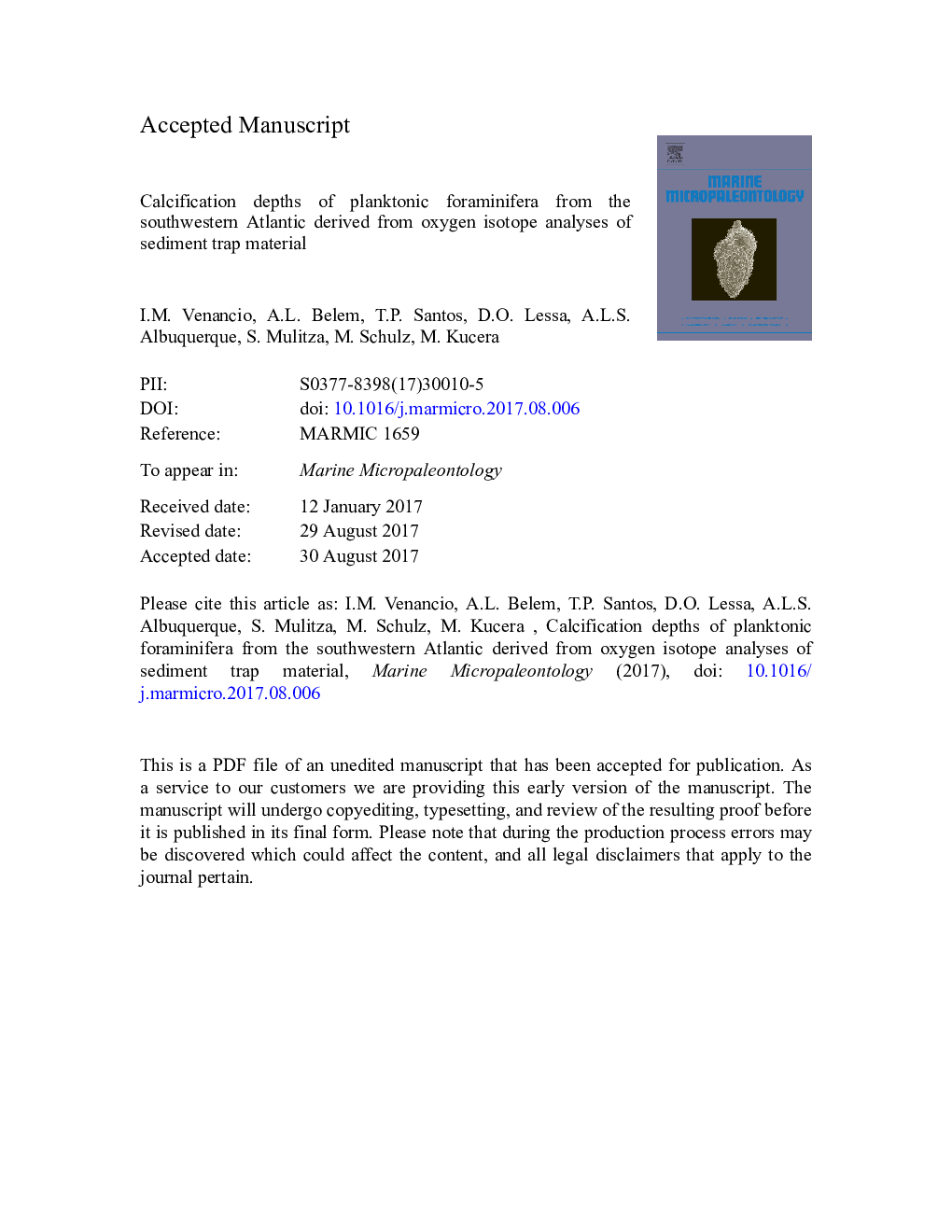| کد مقاله | کد نشریه | سال انتشار | مقاله انگلیسی | نسخه تمام متن |
|---|---|---|---|---|
| 5788177 | 1642149 | 2017 | 49 صفحه PDF | دانلود رایگان |
عنوان انگلیسی مقاله ISI
Calcification depths of planktonic foraminifera from the southwestern Atlantic derived from oxygen isotope analyses of sediment trap material
ترجمه فارسی عنوان
عمق کلسیفیکاسیون فورنینیفور پلانکتونی از جنوب غربی اقیانوس اطلس حاصل از تجزیه ایزوتوپهای اکسیژن از مواد تله رسوب
دانلود مقاله + سفارش ترجمه
دانلود مقاله ISI انگلیسی
رایگان برای ایرانیان
کلمات کلیدی
فورنینیفور پلانکتونی، فصلی، تله رسوب، جریان مرزی غربی، اقیانوس اطلس،
موضوعات مرتبط
مهندسی و علوم پایه
علوم زمین و سیارات
فسیل شناسی
چکیده انگلیسی
We present a multi-year record of shell fluxes and δ18O of six planktonic foraminifera species (Globigerinoides ruber pink, Globigerinoides ruber white, Trilobatus sacculifer, Orbulina universa, Neogloboquadrina dutertrei, Globorotalia menardii) from sediment traps located in the southwestern Atlantic. Among the six species, only the fluxes of G. ruber white and N. dutertrei exhibit a significant seasonal component, with G. ruber white showing a single flux peak in austral summer, and N. dutertrei exhibiting two flux peaks in spring and autumn. To estimate calcification depths of the studied species, we then compare their measured δ18O to vertical δ18O profiles predicted for each collection time from in-situ temperature profiles and climatological salinity profiles. For the majority of the cases, the measured δ18O could be accounted for by in-situ calcification, assuming species-specific temperature-δ18O calibrations. The resulting estimates of the calcification depth imply that each species exhibits a characteristic typical mean calcification depth. The estimated calcification depths for N. dutertrei (mode 60-70 m) and G. menardii (mode 70-80 m) appear to track the depth of the thermocline in the region, whereas the calcification depths of the remaining four species correspond to conditions in the mixed layer. Among the apparent mixed-layer calcifiers, G. ruber pink and white appeared to calcify consistently shallower (mode 30-40 m) while T. sacculifer calcified deeper (mode 50-60 m). Because of the low flux seasonality, the observed oxygen isotope offsets among the species are similar to the flux-weighted mean annual δ18O offsets, indicating that isotopic offsets among the species in sediment samples are mainly due to different calcification depths. Since the habitat offsets among the species are consistent across seasons, δ18O in sedimentary shells can be used to track conditions in different parts of the water column and the difference in the oxygen-isotope composition between surface species (best represented by G. ruber pink) and thermocline species (best represented by N. dutertrei) can be used as a proxy for stratification in the southwestern Atlantic.
ناشر
Database: Elsevier - ScienceDirect (ساینس دایرکت)
Journal: Marine Micropaleontology - Volume 136, October 2017, Pages 37-50
Journal: Marine Micropaleontology - Volume 136, October 2017, Pages 37-50
نویسندگان
I.M. Venancio, A.L. Belem, T.P. Santos, D.O. Lessa, A.L.S. Albuquerque, S. Mulitza, M. Schulz, M. Kucera,
